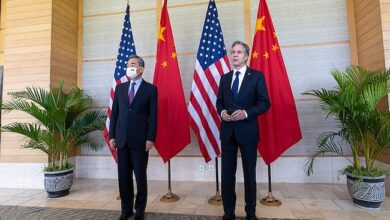
By Atharva Mehendale
A group of protestors blocked the entrance to a site office for a planned high-speed rail line – HS2 in London last week. The group demanded the money be diverted from the project to improve health services battling the coronavirus pandemic. They also claimed that the work was non-essential and was putting the lives of workers and their families at risk. Banners reading “NHS not HS2” highlighting the chronic underfunding of the National Health Service (NHS) were seen at the protest. High Speed 2 (HS2) is a partly planned high speed railway in the United Kingdom, with its first phase in the early stages of construction and future stages awaiting approval. Scheduled to open in phases between 2029 and 2035, HS2 will be the second major high-speed rail line in Britain.
High Speed 1 (HS1), which was the first, connects London to the Channel Tunnel and was opened in the mid-2000s. Protests like these bring up important questions about the way in which transport infrastructures in urban areas would be looked at in a post-covid world. The pandemic has revealed vulnerabilities that challenge the resilience of infrastructures and institutions in cities. It has also changed the way in which people move, commute, work and live. The call for social isolation and a lockdown-like situation around the world has brought systems of public transportation in cities at a halt. If one is to think about a post-covid world, it would be necessary to understand what would the new ‘normal’ for these transportation systems in particular, and for urban mobility patterns in general be.
With social distancing here to stay for the weeks, months and (possibly) years to come, ridership in public transportation systems in cities would take a hit. In the months to come, the economic turmoil that the pandemic has brought along would have a severe impact on patterns of employment, public and private investments and consumer spending patterns. Taking this into account, a boom in private car ownership cannot be expected in spite of public transportation systems taking a hit; especially in developing economies. A possibility of commuters opting for shared mobility options, self-driven (rented) cars and e-bikes seems like a highly probable option. In a situation like this, it is imperative for public agencies to rethink patterns of investment in transport infrastructures. An increased number of people would opt for working from home whenever possible; and hence private and public players in the transport services sector should opt for newer business models to account for this.
Urban infrastructures exert significant influence on the global economy and have become central to ensuring a sustainable future. Furthermore, construction and operation of urban infrastructures puts tremendous technical, economic, and management risks on a plethora of stakeholders – users, citizens, investors, and policy makers. Each of these stakeholders have their own set of objectives and expectations, and urban infrastructures have to attend to them all. Ultimately, successful planning, operation & management of urban infrastructures also means optimally balancing the responses to these different stakeholder demands and expectations. These very demands and expectations are to undergo a transformational shift in the coming future; and it is necessary for policy discussions to keep up with this transformation.
A discussion about the positive effects that the pandemic has had on the environment has also been a crucial one. As industries, transport networks and businesses have closed down, it has brought a sudden drop in carbon emissions. Compared with this time last year, levels of pollution in New York have reduced by nearly 50% because of measures to contain the virus. This reduction in emissions can be jointly attributed to reduced industrial activity and urban mobility. While rethinking patterns of mobility in a post-covid world, it is necessary to lay emphasis on re-building the economy on renewable energy resources that would contribute towards significantly lowering carbon emissions. This would also require policy makers to intervene into the effects such a change would have on the infrastructure, investment patterns, skill sets and patterns of employment.
In conclusion, this piece stresses upon the need to rethink policy approaches and investment patterns around urban mobility to account for the transformational shift catalysed by the pandemic. It is crucial to think about the sustainability of mass-scale transportation projects like the HS2 in the face of the changing scenario. A perspective shift in the way in which these systems are looked at might just be the need of the hour.
Atharva Mehendale is a graduate student pursuing a Master of Arts in International Relations from the School of International Affairs, O.P Jindal Global University, India. His research interests lie at the intersection of urban affairs and migration studies. He is currently working on his master’s thesis that explores migrant aspirations vis-à-vis the political economy of internal migration in India. He is associated with the Centre for Migration & Mobility Studies at the same university as a Research Assistant.




